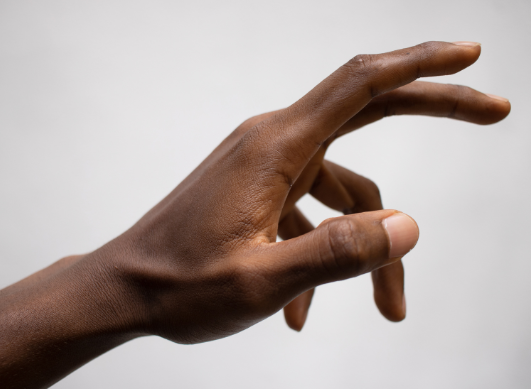What is the Diabetic Hand Syndrome?
Published Jul 13, 2024 • By Candice Salomé
Diabetic hand syndrome refers to a series of painful complications experienced in the hands associated with diabetes. These complications are frequent among diabetics, though they are not widely recognized.
So, what exactly is diabetic hand syndrome? What are its symptoms? And how is it managed?
Uncover everything in this article!

What is Diabetic Hand Syndrome?
Diabetic hand syndrome is a common complication of diabetes, though it is rarely discussed. This term covers a range of disorders that, if detected early, can be successfully treated.
Both type 1 and type 2 diabetes are associated with these musculoskeletal disorders. Musculoskeletal pain affects the muscles, bones, ligaments, tendons, and nerves. This pain can be either acute (sudden onset) or chronic (long-term).
Diabetic hand syndrome can manifest in several forms:
Dupuytren's disease
The first symptom of Dupuytren's disease is usually the appearance of a painful nodule on the palm. Initially, it may cause discomfort, but the pain gradually subsides. A contracture of the hand occurs, and the fingers begin to bend progressively. Eventually, the flexion of the fingers worsens, and the hand can become permanently curved.
Diabetic cheiroarthropathy
Diabetic cheiroarthropathy refers to a syndrome causing stiffness in the fingers. This syndrome is characterized by a painless limitation of finger flexion and especially extension. It can be accompanied by skin thickening.
Carpal tunnel syndrome
Carpal tunnel syndrome involves compression of the median nerve, which runs from the wrist to the palm. This compression causes numbness, tingling in the fingers, and pain that can extend from the palm to the forearm. Other symptoms include weakness in the thumb and difficulty with precision movements.
Trigger finger
Trigger finger is caused by thickening of the flexor tendon, leading to pain and locking of the finger when bent or extended. It results from inflammation and swelling of the synovial sheath surrounding the flexor tendon of the finger.
How is Diabetic Hand Syndrome managed?
These various conditions can be quite debilitating, as patients may lose agility in daily movements. They do not spontaneously regress, so it is important to consult a doctor at the first sign of symptoms for prompt treatment.
Depending on the condition and severity, treatment may include:
- Corticosteroid injections
- Pain relief medications
- Physical therapy
- Wearing a splint
- Surgical intervention
Maintaining stable diabetes control is crucial and remains a key preventive measure for joint complications.
Corticosteroid injections can significantly destabilize diabetes, especially if long-acting corticosteroids are used. Therefore, always inform your doctor about your diabetes before these injections. If an injection is performed, diabetes monitoring should be intensified.
Similarly, for surgical interventions, doctors must be informed about your condition due to the higher infection risks in diabetics. The surgery should be performed by a hand surgeon.
Key Takeaways
Hand pathologies in diabetic patients are very common yet not well known. Early detection through clinical examination of any symptoms is essential to alleviate patients' pain, reduce discomfort and disability, and prevent certain surgeries. The management of these conditions differs little between diabetic and non-diabetic patients. However, caution is required with local or oral corticosteroids that can destabilize diabetes. Increased monitoring of blood glucose levels post-infiltration is advisable to adjust treatment if necessary.
Did you find this article helpful?
Give it a "Like" and share your thoughts and questions with the community in the comments below!
Take care!
1 comment
You will also like

Diabetes: Discrimination, Professional Life, Plan Ahead... What do patients say?
Nov 9, 2018 • 9 comments

Fighting Schizophrenia Symptoms: a Long Journey Against Paranoia after Denial and being Admitted
Dec 12, 2018 • 6 comments

 Facebook
Facebook Twitter
Twitter

